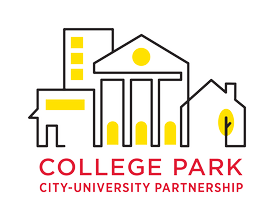Why Housing Matters
Welcome to the first of a series of regular columns about affordable housing. Over the course of the next 12 months, we will explore the confluence of homeownership and affordable housing. This month, we will set the context. We examine and discuss tools.
As an Affordable Housing Land Trust, we recognize the path to homeownership can be complex, especially amidst a hyper-competitive housing market. While our innovative model is one of several research-based policy tools intended to overcome barriers to affordability, we recognize our model is less known than other approaches. We aim to demystify homeownership, and to empower individuals to make the decision that. is right for them through (1) information and (2) ongoing support.
Why is everyone talking about a housing crisis? Quite simply, housing affects virtually everyone in this country. The American Dream always has been being able to buy a home, or at the very least, being able to live in a safe, secure and stable environment be it homeownership or rental, single-family, multifamily, condominium or cooperative, urban or rural. Homeownership represents two expectations. First, in United States, it is possible for the average individual to both generate and pass along wealth over one’s lifetime. Second, Americans expect to live in a pleasant, safe, predictable community.
While the suggestion the ‘American Dream’ is rapidly becoming more pervasive may feel like merely a politically motivated scare tactic, it is unfortunately upheld by fact. Since 2010, home prices in Prince George’s County (where College Park is located) have risen by 73%, while wages rose by only 42% in the same period.1 It feels harder to buy a home today because it IS more difficult. If home prices grow faster than wages, homeownership, and the wealth generation that follows, becomes less viable to middle income individuals – even when they are doing everything ‘right’.
What other factors contribute to the housing challenge? The Coronavirus pandemic increased competition for housing for several reasons. For one, reduced supply of labor and building materials decreased output of new development in an already competitive market. More recently, rising interest rates have increased the cost of housing almost universally. 30-year mortgage rates were under 3% a just few years ago; in 2022/23, rates have more than doubled to levels approaching 7%+. Logically, many current homeowners with low-rate mortgages are unwilling to sell their home; and take on a mortgage at an interest rate double what they are paying. Conversely, more than 20% of homeowners pay more than 30% of their income for housing, with slightly under 10% of homeowners paying more than 50% of their income for housing. The stress is even more severe among renters and even more challenging for people of color.2
Why does homeownership matter? The expectation commonly found at the center of ‘The American Dream’ that homeownership is a means to wealth generation is not unfounded. Several recent studies concluded, “homeownership is the primary way low- and moderate-income families are able to build wealth and achieve financial stability.”3 While Homeownership is not the only way individuals may accumulate wealth, as a supplement to other financial assets, it is an extremely important and transformative tool, particularly for people of color. –4
What are some actions that can be taken to combat barriers to housing affordability? There are longstanding policy precedents designed to address affordability challenges for both buyers and renters. Conventionally, policies implemented to increase the rate of homeownership, tax benefits such as the mortgage interest deduction, which allows homeowners tax deductions based on the interest rate of their mortgage Traditional policies created to assist renters prioritize Low-Income Housing Tax Credits as a means of adding to the supply of affordable rental housing.
What is being done to foster homeownership in College Park? The College Park City-University Partnership established the Community Preservation Trust as an Affordable Housing Land Trust consistent with the Affordable Housing Land Trust Act of 2010. The Land Trust Model, along with an initial capital investment allows the Trust to purchase homes at market value and later resell them to income-eligible people at a lower price. The model makes homeownership viable to low- and middle-income individuals who previously thought homeownership, and the long-term wealth generation it often entails, was out of reach for them.
How does an Affordable Housing Land Trust Operate? We understand our innovative model is not a common tool in the affordable housing arena. In the next issue, we will provide a detailed, straightforward examination of our model, and other useful information for prospective homebuyers to demystify the homebuying process.
